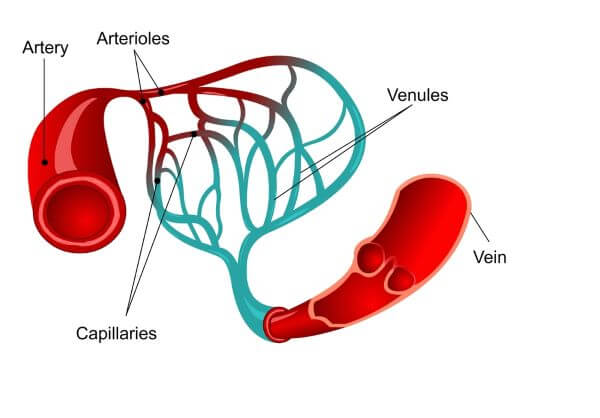Arteries and veins are two of the main types of blood vessels in the cardiovascular system, which transports blood to every cell of the body. Arteries carry oxygenated blood from the heart to the rest of the body and veins carry deoxygenated blood from the body back to the heart.
Veins and arteries have slightly different functions, so there are some key structural differences between the two. Arteries are specially adapted for the transport of highly-pressurized blood, whereas veins have features that allow them to move blood against the direction of gravity.
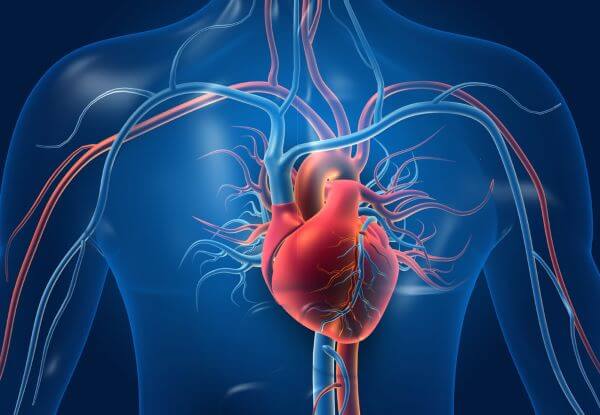
What is the Blood Circulatory System?
The blood circulatory system (AKA the cardiovascular system) consists of the heart and blood vessels. Its job is to transport blood all around the body, delivering nutrients and oxygen-rich blood to the cells and carrying deoxygenated blood and waste products away.
Two of the main types of blood vessels in the human body are the arteries and the veins.
What Are Arteries?
Arteries are one of the main types of blood vessels in the human body. They carry oxygen-rich blood away from the heart to the rest of the body. Almost all of the arteries carry oxygenated blood, except for the pulmonary artery, which carries deoxygenated blood from the heart to the lungs.
The largest artery in the human body is called the aorta. When oxygenated blood leaves the heart, it flows through the aorta before traveling to the rest of the body.
What Are Veins?
Veins are the blood vessels that carry deoxygenated blood from the body back to the heart. They usually carry deoxygenated blood, but the pulmonary vein carries oxygenated blood back to the heart from the lungs.
The largest vein in the human body is called the inferior vena cava. This blood vessel transports deoxygenated blood from the lower body back to the heart.
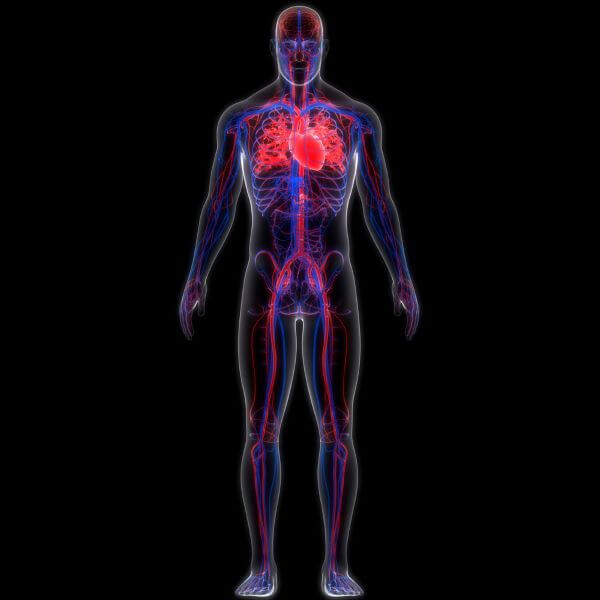
Arteries vs. Veins
Arteries and veins are both major components of the cardiovascular system, and both are responsible for transporting blood around the body. However, there are several key differences between the two.
Artery |
Vein |
| Carries blood away from the heart | Carries blood back to the heart |
| Transports blood under high pressure | Transports blood under low pressure |
| Carries oxygenated blood (exception: pulmonary artery) | Carries deoxygenated blood (exception: pulmonary vein) |
| Thick, muscular walls containing lots of elastin | Thinner walls containing less elastin |
| No valves | Valves |
| Smaller lumen | Larger lumen |
Direction of Blood Flow
Arteries carry blood away from the heart, whereas veins carry blood back to the heart. Almost all arteries transport oxygenated blood and almost all veins carry deoxygenated blood. The only exceptions to this rule are the pulmonary artery (which carries deoxygenated blood from the heart to the lungs) and the pulmonary vein (which carries oxygenated blood from the lungs to the heart).
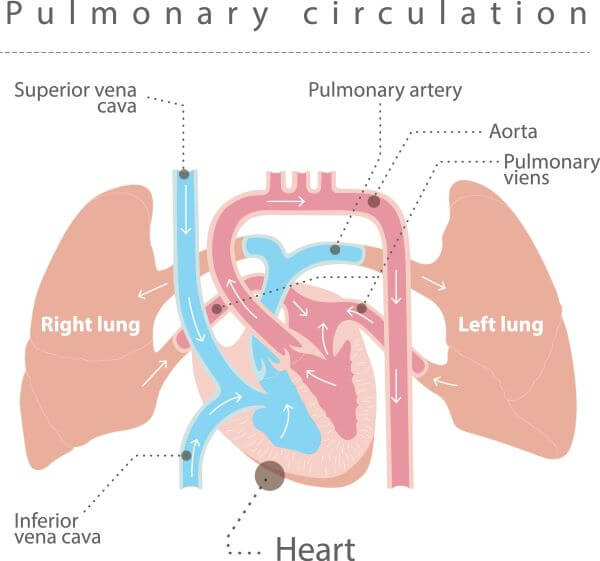
Adaptations to Blood Pressure
The blood in the arteries is under much higher pressure than the blood carried by the veins. This is because the pumping action of the heart ‘squeezes’ the blood and puts it under enormous pressure. Blood pressure is especially high in the aorta, as this artery is directly connected to the heart. Arteries have several structural adaptations that help them cope with this pressure; mainly, their thick, muscular walls. The arterial walls are much thicker and more elastic than those of the veins, which don’t need to be as strong or durable. This elasticity allows the arterial walls to bulge outwards as blood flows through them and prevents them from bursting.
As it moves away from the heart, the pressure of the blood steadily decreases. By the time it arrives in the veins, it is under low pressure. Therefore, the walls of the veins are much thinner and less elastic than those of the arteries.
Arteries also have smaller lumen than veins. This helps to maintain the pressure of the blood and keeps it moving forward through the cardiovascular system. In veins, a larger lumen makes it easier and more efficient to transport blood under low pressure and against the direction of gravity.
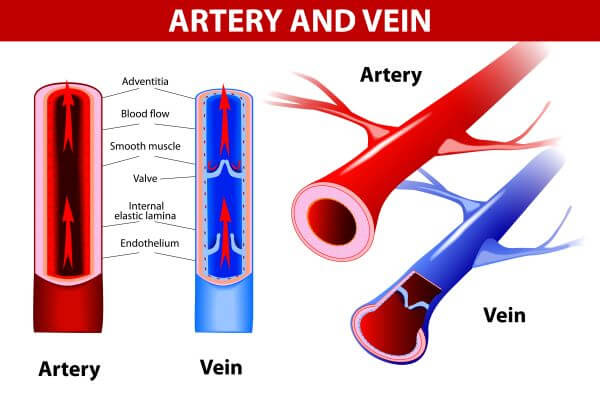
Presence of Valves
Another key difference between the structure of different blood vessels is valves, which are found in the heart and veins, but not in the arteries.
Valves are flaps of elastic tissue that open and close, acting like gateways that stop blood from flowing backward. They aren’t needed in the arteries, because the blood is under too high a pressure for backflow to be possible. However, they are needed in the veins, where the blood is under much lower pressure and must move against the force of gravity (for example, from the feet back up to the heart).

What Are Capillaries?
Capillaries are the third main type of blood vessel in the cardiovascular system. They are the smallest and most numerous types of blood vessels in the body and connect smaller arteries (called arterioles) to smaller veins (called venules). Capillaries allow the blood to come into close contact with body tissues, and their main function is to supply cells with oxygen and nutrients while carrying carbon dioxide and waste materials away. The capillary walls are very thin – just one cell thick – which allows molecules to easily diffuse across them.
